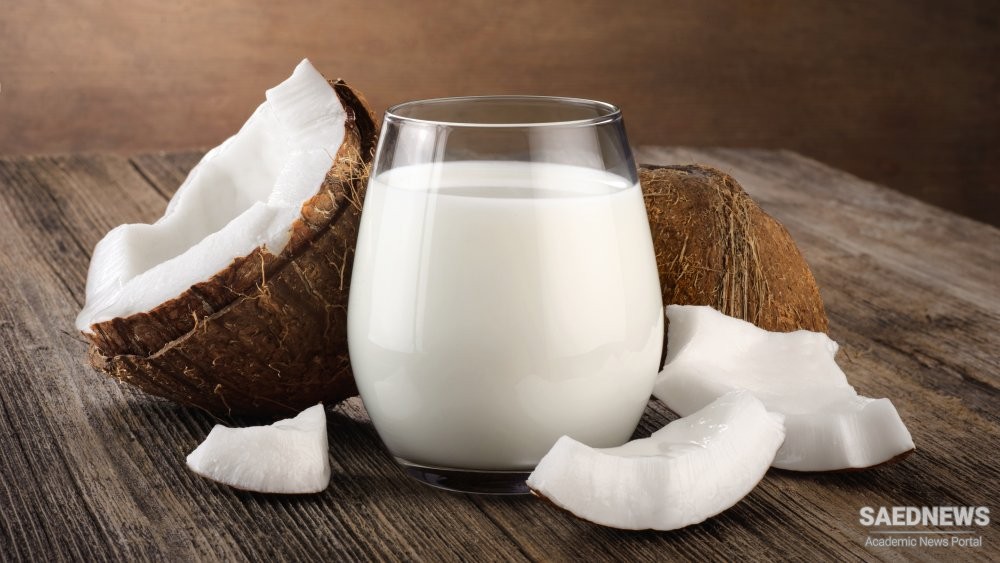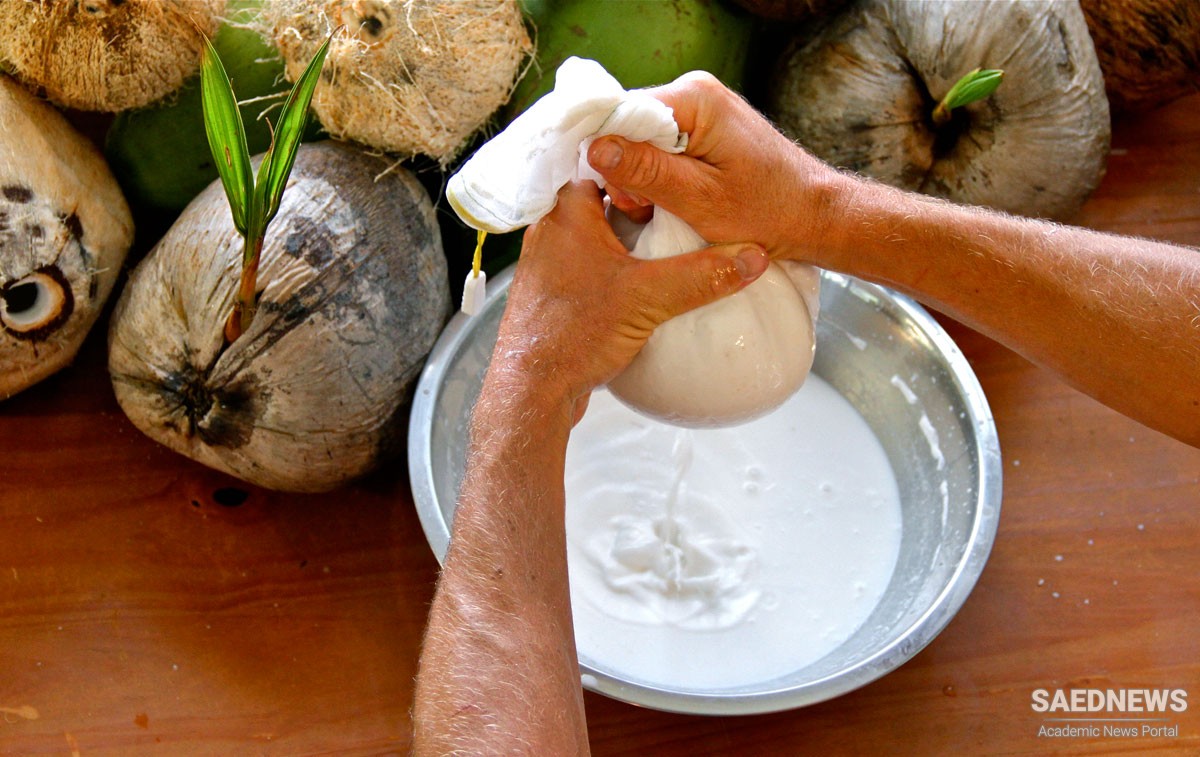The first is generally referred to as ‘thick’ or ‘first squeeze’ coconut milk. After this there is ‘thin’ or ‘second squeeze’ milk, and sometimes, though only rarely, even ‘third squeeze’. Sometimes, too, with Indonesian and Malay recipes you will simply be instructed to add ‘coconut milk’. This is my fourth kind: a mixture of one part thick and two parts thin milk, described here as ‘all-purpose’ coconut milk.
Occasionally a Malay recipe will call for the addition of pati santan, translated here as ‘coconut cream’. When this is used it is usually meant to impart a rich oiliness to dry-cooked dishes and is not to be confused with ‘thick coconut milk’. Pati santan is the liquid squeezed out of fresh grated coconut (it must be a mature one but not old) without adding any water at all. It does not appear often in these recipes.
This is the best but most laborious way to make coconut milk. Break open a coconut that is mature but young enough and fresh enough still to have water in it. You should be able to hear the water when you shake it; the water will probably not be nice enough to drink but may be used in some Vietnamese recipes. Grate the flesh finely in one of three ways:

# Use a sit-on grating stool or ‘rabbit’ (Indonesians, Malays, Thais, Lao and Cambodians all have these). With the flesh and skin still adhering to the shell of the coconut scrape out the meat, turning the coconut until it is grated down to the skin. Scrape out the final residue with a spoon.
# Remove the flesh from the shell and leave its skin attached. Cut the flesh into four pieces and holding the pieces with the skin out use a round grater to grate finely. Grate as closely as possible to the brown skin but do not include it.
# Cut the skin off the coconut flesh and cut the flesh into pieces 2.5 cm (1 in) square. Using a powerful food processor or blender, grate or chop the coconut until it is finely and completely grated. There is an Indian processor such as a Sumeet with a vegetable grater blade which is good for this but normal ones should do the job if they are tough enough.
To 500 g (1 lb) grated coconut meat or 1 whole grated coconut, add ½–1 cup warm water. (Depending on how juicy the coconut is this should yield about 1–1½ cups first squeeze or thick milk.) Knead and squeeze this thoroughly or process it for 2 minutes to drag out as much of the nut’s juices as possible, and then squeeze dry, keeping the pulp aside. (Do this by hand: you could use a piece of muslin or cheesecloth to make the squeezing easier.) Reserve the first squeeze milk and repeat the process with 2 cups of warm water for the second squeeze, or thin milk, and again for third squeeze if you need it.


 Rice the White Bride of the South Asian Cuisine: Tips for Beginners
Rice the White Bride of the South Asian Cuisine: Tips for Beginners














































